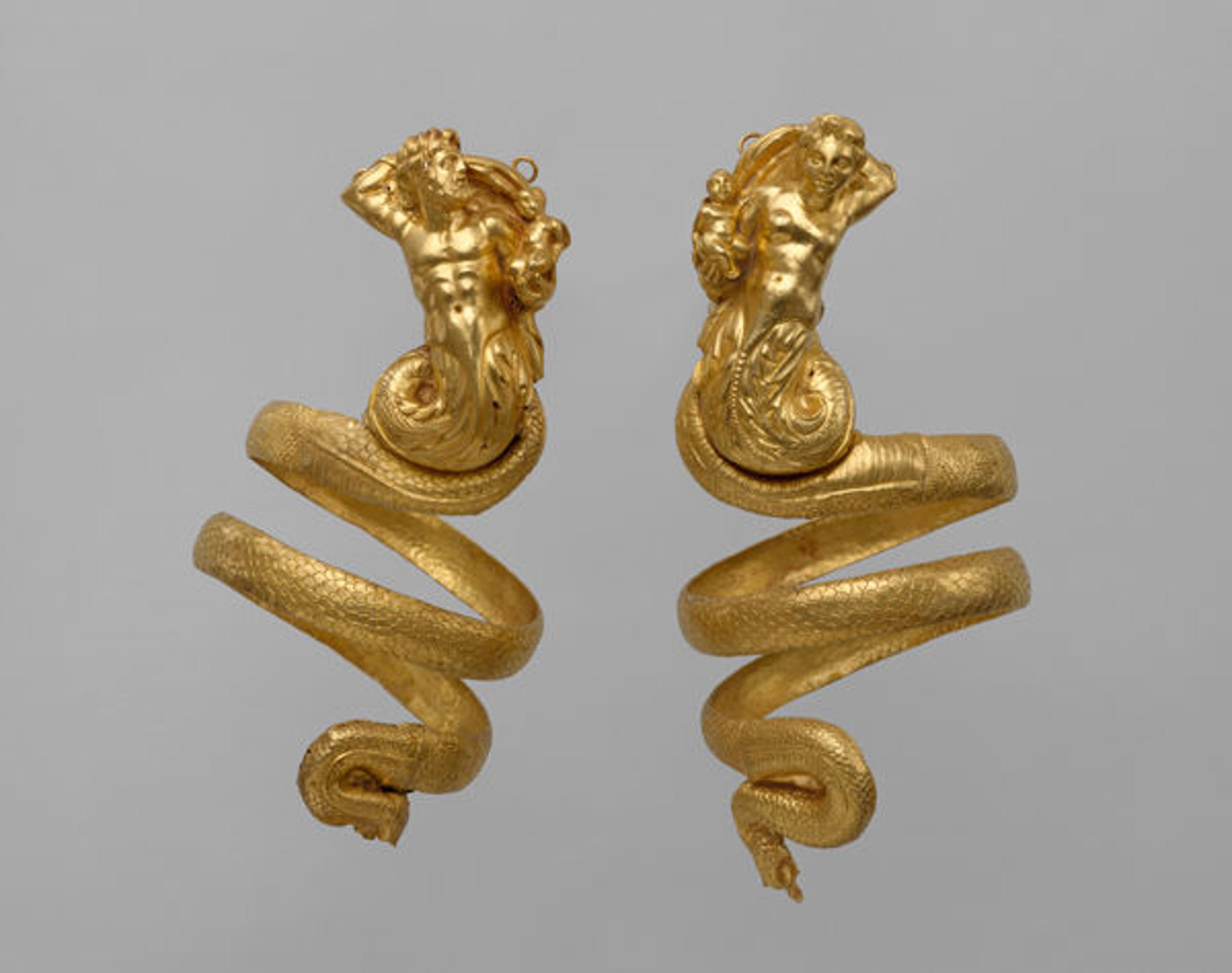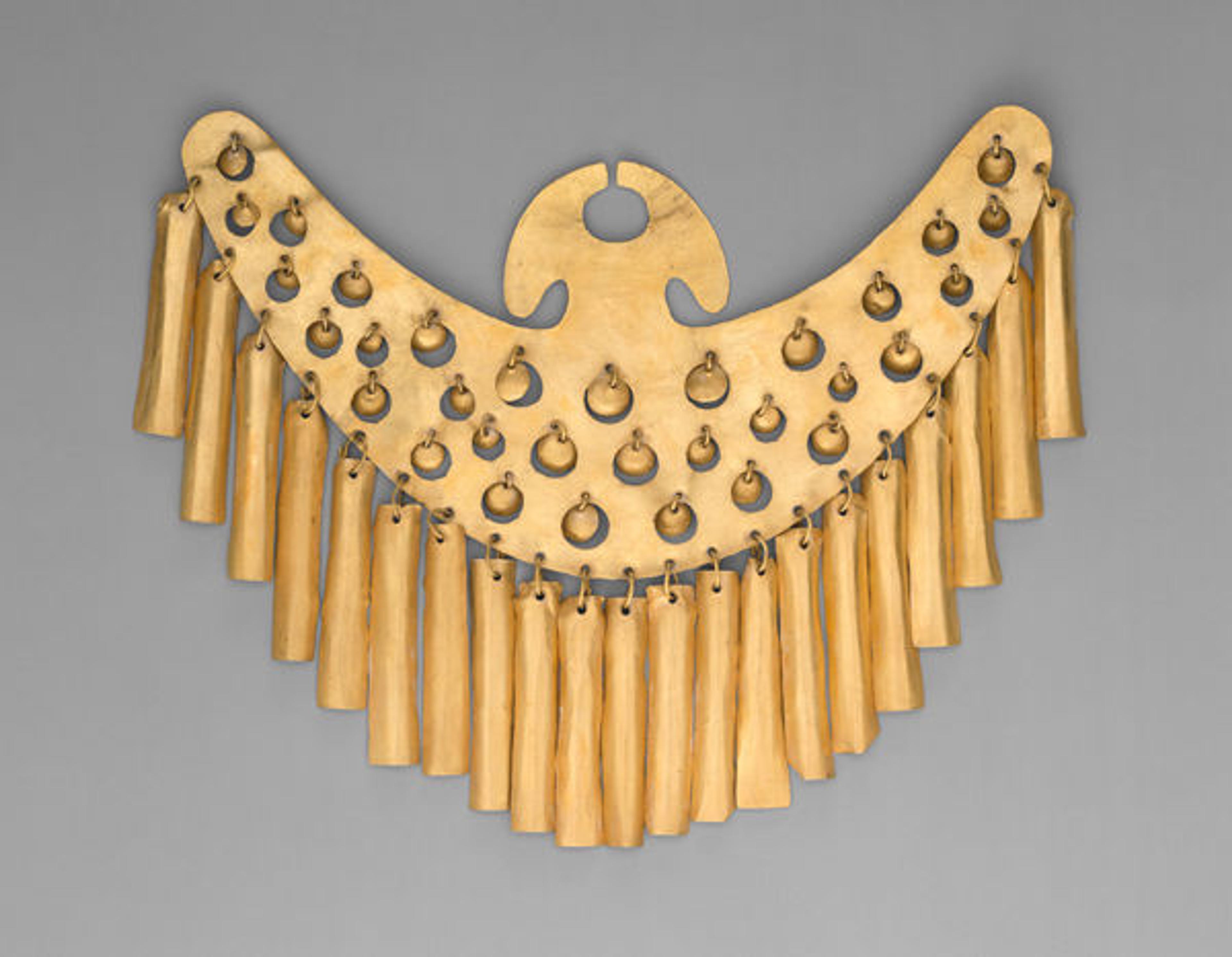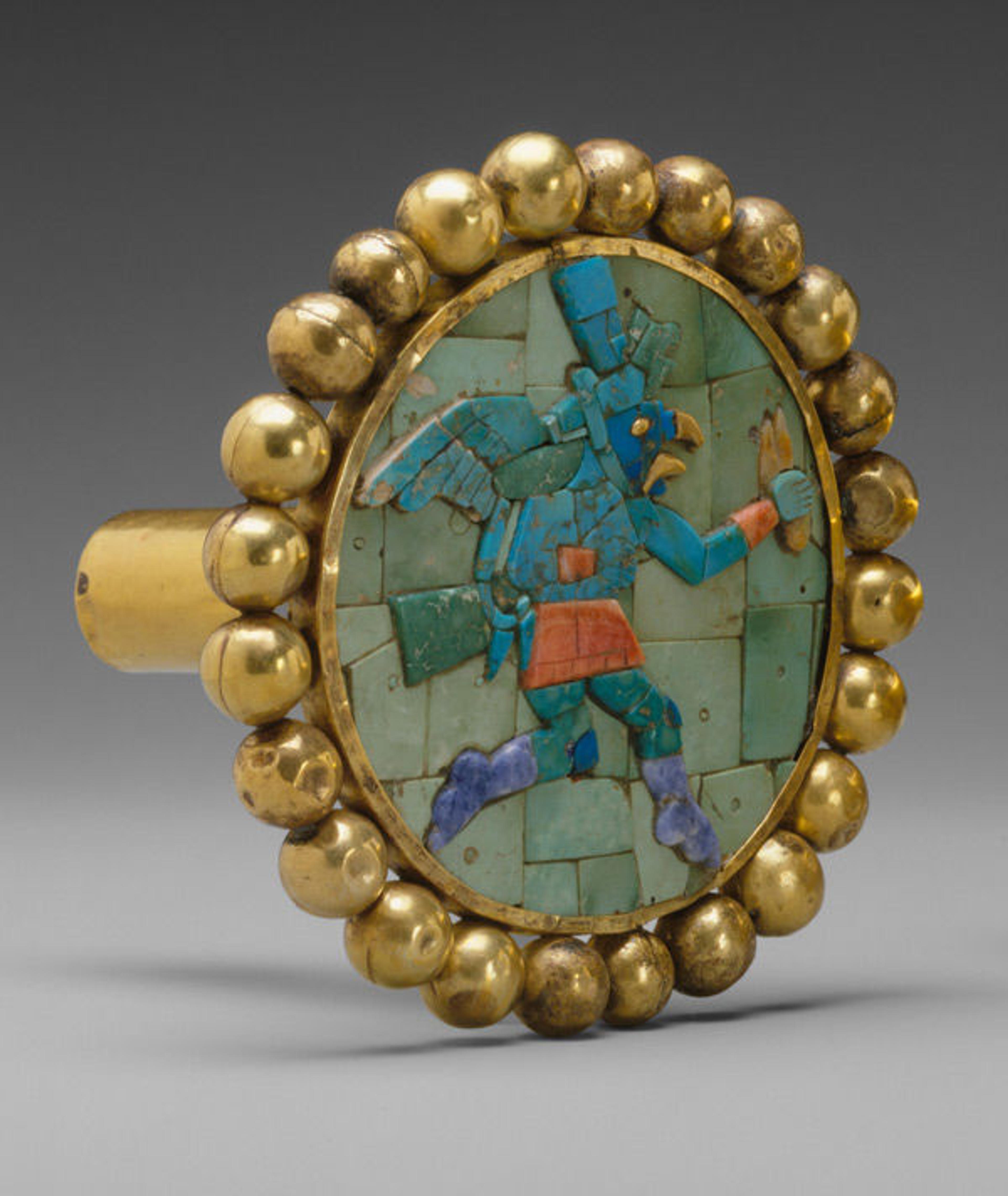A Jewelry Designer's Tour of the Met

Pair of gold armbands, ca. 200 B.C. Greek. Hellenistic. Gold; Overall: 10 7/16 in., 0.4 lb. (26.5 cm, 0.2 kg); Other (height-triton armband): 9 13/16 in. (25 cm); Other (height-tritoness armband): 10 7/16 in. (26.5 cm). The Metropolitan Museum of Art, New York, Rogers Fund, 1956 (56.11.5, .6)
«The Met's collection is a world of inspiration for artists. As an administrator in the Department of Greek and Roman Art and a jewelry designer, I often stop in the galleries on my way to a meeting or sketch during my lunch break, and I am constantly looking to past centuries for new ideas.»
I am obsessed with this pair of gold armbands in the Hellenistic jewelry collection of the Greek and Roman Art galleries. These armbands are a true classical masterpiece and a huge inspiration in my own jewelry making; their golden color drew me in at first sight, and their elegant form held my gaze. The realistic male and female triton figures are beautifully molded, their enviable physiques are handsomely represented, and the tendrils of gold scales slither from the base of the bodies down to form a sea serpent's head.
These fine examples of sophisticated techniques, including stamping and hammering, were made to celebrate the birth of Aphrodite, the goddess of love. The armbands are six-and-a-half ounces of pure gold and are a rich golden-yellow hue—the higher the concentration of the gold, the warmer and richer the color. The loops at the top of each armband would attach to a woman's garment and hold the heavy metal in place on the wearer's upper arms. I can stare at these luxurious armbands for hours, and I feel like I discover something new every time I look at them.

Nose ornament, 1st–7th century. Columbia. Calima (Yotoco). Gold; H. 5 5/16 in. (13.5 cm). The Metropolitan Museum of Art, New York, Gift and Bequest of Alice K. Bache, 1966, 1977 (66.196.23)
My next stop is usually the Jan Mitchell Treasury in the Department of the Arts of Africa, Oceania, and the Americas. These glistening galleries are filled with miniature treasures, and the luminous yet subtle hammered gold makes the artworks in these galleries some of my favorites for design ideas. Nose ornaments are a major attraction here; the thin sheets of gold come to life within their cases, which are adorned with fluttering pieces, and I can imagine the sound these pieces would have made when the wearer moved. The nose ornament pictured above particularly draws me in because of its ability to translate into a contemporary aesthetic.

Pair of earflares, Winged Messengers (one pictured above), 3rd–7th century. Peru. Moche. Gold, turquoise, sodalite, shell; Diam. 3 3/16 in. (8 cm). The Metropolitan Museum of Art, New York, Gift and Bequest of Alice K. Bache, 1966, 1977 (66.196.40-.41)
This earflare from Peru, pictured above, dates back to the third through seventh century and is exceptionally remarkable. The mythical winged messenger is made of chipped turquoise, gold, sodalite, and shell, which gives it a wonderful depth and playful sophistication. These heavy ornaments were worn on distended, or stretched earlobes, very much like a Boddhisattva in Chinese and Indian cultures. The weight of this earflare is so substantial that these adornments rested on the shoulders, like they do on the nineteenth-century sculpture of a Boddhisattva from Nepal, pictured below. I am always mesmerized by how detailed and ornate the jewelry on these sculptures are, and it is quite exciting to see the figures wearing these types of jewelry so that the viewer can imagine how they were worn centuries ago.

Bodhisattva, probably Padmapani Lokeshvara, 10th–11th century. Nepal (Kathmandu Valley). Licchavi–Thakuri periods. Gilt copper alloy; H. 11 7/8 in. (30.2 cm). The Metropolitan Museum of Art, New York, Gift of Margery and Harry Kahn, 1981 (1981.59)
Since I am of Asian descent, I often like to wander through the Chinese, Japanese, Korean, Southeast Asian, and Indian galleries. I am particularly interested in the Indian galleries because the luxurious materials and details are so lavish that they seem like a fantasy, and viewing these artworks gives me an escape from reality that heightens my creativity.
I often incorporate vintage materials in my own jewelry making, hoping, in a way, to bring the past back to life. I invite you to ramble through our galleries full of centuries-old artworks to find your inspiration.
Debbie Kuo
Debbie Kuo is an administrator in the Department of Greek and Roman Art.